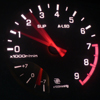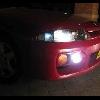Rb20Det Oil Pump Clearance And Checking
Announcements
-
Similar Content
-
Latest Posts
-
Ha, I stopped running Iridiums and fancy spark plugs in RBs as they last just as long as coppers, and coppers are way way cheaper. RBs foul the plugs well before "they expire the plug"
-
Nah mate, currently all spare time is taken up with landscaping, in saying this, I really want to hit Wakefield in the future, but, I've got a few months of work until I'm happy with the yard My comments were about a YouTube video Duncan just dropped
-
Did you take the MX5 for a Blat around the Track at all?
-
LOL, "they said it might be slippery"..... 30 seconds in your off, 60 seconds in white twin backs into the corner That new track looks good, and the Datsun was chopping cars quite nicely
-







Recommended Posts
Create an account or sign in to comment
You need to be a member in order to leave a comment
Create an account
Sign up for a new account in our community. It's easy!
Register a new accountSign in
Already have an account? Sign in here.
Sign In Now